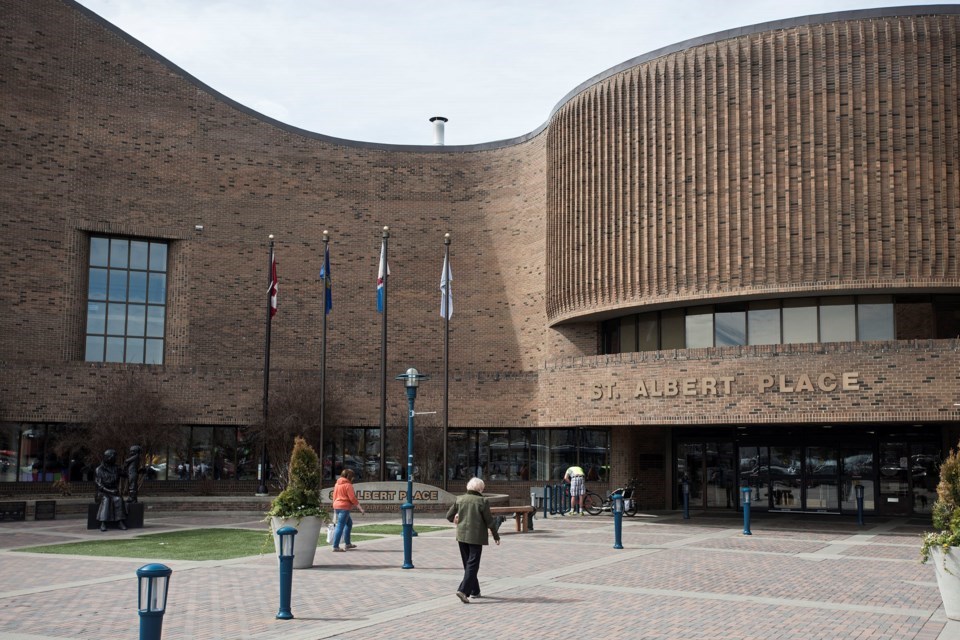As St. Albert city council comes to terms with a limited ability to take on long-term debt, a municipal finance and governance expert says the city is restricted when it comes to other financing strategies and new ways of generating revenue.
Council learned last week the city will likely be unable to move forward with many projects planned for the next 10 to 15 years because of the city encroaching on its long-term debt limit.
St. Albert's debt limit, as determined by the provincial government, is nearly $300 million; however, the city's internal policy-determined debt limit is closer to $255 million. As of writing, the city's outstanding debt is about $91.2 million, although council has approved $22 million in borrowing that hasn't appeared on the city's financial reports to date.
Despite the city being under 50 per cent of the internally determined debt limit, the scale and cost of some of the upcoming projects, if passed by council, could have St. Albert surpass its limit as soon as 2026.
Enid Slack, the director of the Institute of Municipal Finance and Governance (IMFG) at the Munk School of Global Affairs and Public Policy at the University of Toronto, says given the city's debt situation, council and administration will need to use other financing strategies for projects, or simply defer them until the city has room to borrow again.
“You can come up with creative ways to borrow, but at the end of the day, you have to pay back the debt,” Slack said. “You have to have revenues to do that, and that's going to be property taxes, user fees, or any other taxes you're able to collect.”
St. Albert generates revenue through property taxes; sales and user fees; fines; ambulance services; licensing and permitting fees; investment income; and franchise fees.
When looking to generate new forms of revenue, municipalities are limited by provincial regulations, Slack said. In Alberta, municipalities must abide by the Municipal Government Act (MGA). The MGA states municipalities can generate revenue through property taxes, special levies, a range of specific taxes, investments, grants from other levels of government, and municipally controlled corporations, such as the City of Medicine Hat's ownership and operation of the local electricity grid.
“It's pretty similar across the country,” Slack said. “Those revenue sources ... have not changed very much for many years.”
In other countries, such as the United States, certain states such as Indiana allow municipalities to charge and collect individual income taxes on residents. As well, states like Pennsylvania allow municipalities to collect corporate income and payroll taxes.
When asked for a Canadian example of a recent attempt by a municipality to develop a new way of generating revenue, Slack referred to the City of Toronto's 2016 effort to install a toll system on two major highways leading into the city.
Although the decision was resoundingly approved by Toronto council at the time, then-premier of Ontario Kathleen Wynne vetoed the toll plan in early 2017.
“We're trying to discourage people from using cars to come into the city and to use transit and other means and road tolls not only bring in revenues, but they change people's behaviour in a way that would have been a good thing,” Slack said of Toronto's road toll plan.
In an email, Mayor Cathy Heron said over her time on council and as mayor, she thinks the city has already exhausted its options for new methods of generating revenue.
“I believe we have explored most options,” she said. “I still firmly believe that a municipal corporation (much like EPCOR, Aquaterra) are the solution.”
The City of Edmonton is the sole shareholder of EPCOR, a utility company that provides energy and water services in Alberta, Ontario, British Columbia, and Saskatchewan, as well as three American states. Aquaterra, which is also a utility company, is owned by the City of Grande Prairie, the County of Grande Prairie, the Town of Sexsmith, and the Town of Wembley.
“I also find it frustrating that the province will not allow municipalities some of the unique tools that were in the big city charters to raise revenue, which leaves us dependent on property taxes,” Heron said, referring to Edmonton and Calgary's ability to collect targeted taxes, such as a hotel tax.
“We have made great progress in finding savings and efficiencies, but these small dollars saved will not ever provide the necessary revenues to match inflation, cost of borrowing and downloading from other levels of government.”
Although she supports the three priority projects administration outlined last week, which were $56 million for critical servicing in the city's northeast, $80 million for servicing Lakeview Business District, and about $16 million for continued work on St. Albert Trail, Heron said “it's long overdue” for the city to invest in more cultural or recreational projects, such as Millennium Park.
“We will fall behind other communities if we don’t invest in culture and recreation,” she said.
“It will become harder to attract non-residential investment if we do not offer a high quality of life.”




